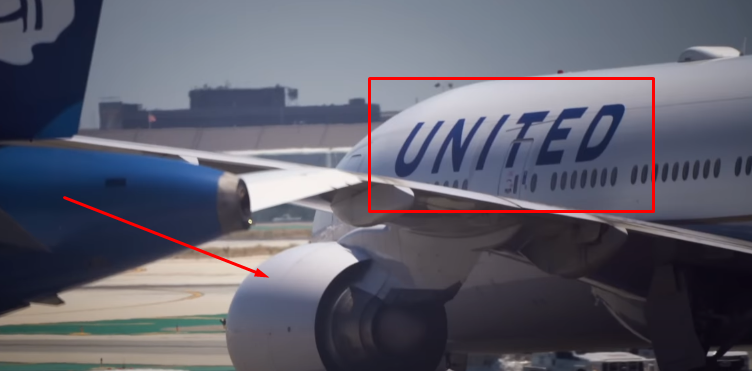In today’s article, I’ll run through five of the most common airport taxi scams, as well as share real-world examples from busy airports around the world.
Definitely stick around until the end so you know what red flags to look out for to avoid falling for this scam on your next trip.

The first scam that every traveler should look out for is the classic fake taxi scam.
This scam involves someone posing as an airport or taxi service official to trick passengers into using their fake taxi service. These fake taxis often don’t have a meter, or they come with a rigged meter that leads to an inflated fare that can be up to five times the standard rate. The problem is that despite knowing that you are being overcharged, You may find yourself cornered into paying inflated rent. This is often due to intimidation tactics by the taxi driver, such as threatening to hold your luggage hostage or using aggressive behavior to pressure you, or even threatening to call the police, which is quite common when you are in a foreign country and possibly facing a language barrier. Can be scary.
The first time I personally fell for this scam was when I flew into Paris alone. Someone in an official-looking uniform told me I was at the wrong airport to catch a taxi to the area of the city I wanted to go. He then directed me to a new gate where another taxi was waiting. His role in the scam was to take tourists to new areas where this group of bogus taxi drivers would then take over. I knew the driver quickly grabbed my luggage and took me to his car, but everything happened so fast, and suddenly I was stranded on the highway. He had a taxi badge and a meter app was displayed on his phone When we got to my hotel, the meter showed I owed €200 for a ride that I later found out should have been €50. I was extremely lucky as a staff member at the hotel I was staying at noticed something was off and came out to help. I believe I paid €70 for the ride, which was a win in my opinion, and I was really happy to get out of the car with my luggage in hand.
I’m still not a fan of Charles de Gaulle Airport in Paris.






Because it always seems like a chaotic and overwhelming experience. The audience, however, has done a great job of setting fixed prices for rides in different areas of Paris to help travelers avoid being overcharged. Unlike another very popular airport notorious for taxi scams,
The next airport taxi scam that every traveler should be aware of is the taxi swap scam.
It involves a two-person team where one acts as a taxi driver and the other as a passenger. A scammer acting as a passenger will approach you claiming that the driver does not accept cash and ask if you can pay with your credit or debit card and then they will give you their cash. If you agree to help, your card is swiped through a tempered terminal and the PIN is captured. Meanwhile, the fake driver steals and exchanges your card for a fake one. They then use the stolen card and your PIN to withdraw money from your account as quickly as possible, sometimes even before you realize your card has been swapped. In any case, If a merchant wants the POS terminal back during a transaction, always remove your card first. It’s also smart to set a daily withdrawal limit, so even if your card is compromised, there’s a limit to how much money can be taken out of your account each day.
The next airport taxi scam is the misinformation scam.
The easiest way to avoid taxi scams is to use a ride sharing service like Uber, Lyft or Grab. Unfortunately, taxi drivers know that this is the easiest way to avoid being scammed. Taxi drivers may falsely claim that ride share services like Uber are unavailable in the city or airport pickups and drop offs are not allowed. The goal is to discourage you from even opening the app and instead taking a ride with their taxi service. It’s unethical, but even officially licensed taxi drivers may pull this stunt in an attempt to get more customers, even if they don’t want to overcharge you.
The next transportation scam is going to get you when you try to avoid getting scammed by pre-booking your transportation from the airport to the hotel.
Booking your transportation in advance from the airport may seem like a safe option, but there are definitely some scams to spot. A common scam involves fake websites that appear to be legitimate You book and pay online, you get a confirmation email, but then the ride never shows up. The second scam also happens after you book and prepaid for a private vehicle or a shuttle online. When you arrive at the airport, a seemingly official person will lie and tell you that your shuttle has left without you. They can then guide you to a taxi offering a better rate. Another variation is where they tell you that you missed the first shuttle, but then they guide you to a new shuttle service. They will advise you to pay and promise to reimburse you for missed shuttles. Unfortunately, this second shuttle is often part of a scam completely unrelated to the company you originally booked with. Which results in double payment and no refund. If you can’t find the pre-booked ride independently, be very careful who you ask to guide you. I spent four months in Playa del Carmen and heard about a dozen variations of the various transportation scams experienced by travelers at the Cancun airport.
The next scam that every traveler should know about is the random bonus fee scam.
I need to come up with better names for these. These scams involve taxi drivers charging unexpected extra fees, even if you’ve previously agreed to a flat rate or they use a meter. Drivers may demand additional charges for luggage, night rides or built-in equipment that significantly increase fares. Some drivers may even insist on paying in the local currency, offering to exchange your money at a lower rate. Others may use tampered meters that quickly increase fares. This is increasingly common with scam taxi drivers who may have an app on their phone as opposed to an official meter. And even if the meter is working properly, a driver may take extra long distances to maximize the fare. You can use a map app on your phone to track your route and prevent driving in circles Dealing with a taxi scam is especially difficult when you’ve already taken a ride, and sometimes, price arguments can put you in a dangerous situation. The key to staying safe is to avoid getting into one of these sketchy taxis.
Here are three simple ways to reduce your chances of falling for a taxi scam. The first is to never accept taxi offers from people inside the airport. Targeting you inside the airport or outside the airport gates is a common tactic of unlicensed taxis trying to grab you before you reach the official stand. It is also a good idea to research and plan your journey from your airport to your hotel before you leave for your trip. Familiarize yourself with the use of ride sharing apps in the area, understand standard fare rates, and learn about any flat rates in different city zones.
Avoiding these scams can be especially challenging because they sometimes involve not only impersonators, but actual official airport staff. It’s not just Paris or Cancun where you’ll find a fake taxi service. These taxi scams target tourists and are common at airports worldwide. If you or someone you know has fallen for one of these taxi scams, be sure to let us know in the comments. You may end up saving someone else from falling for it.
Also know what a government taxi looks like. For example, in Paris, all legal taxis have lighted signs on their roofs. If you are unsure of where to go, always follow the airport signs at the official taxi stand or visit the airport information desk if you have any questions. Before entering any taxi or shuttle or private vehicle, I will also take a picture of the vehicle with the license plate. If the driver tries to delete it later, I’ll send it to a friend now. I’m not secretive about it. I want to make sure that the driver sees that I’m taking this photo and knows that I’ve shared their information. That way, if something goes wrong, you have the driver’s details to report them.




